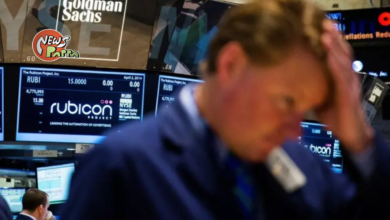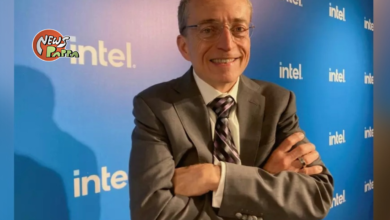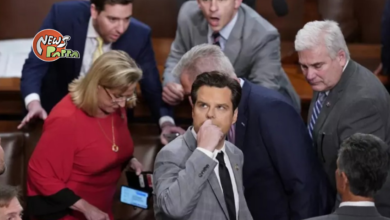Fed officials sing dovish tone and rate hikes are coming to an end

Central Banks’ Divergent Paths: NY Fed President on U.S. Rates, BOJ’s Ueda on Japan’s Policy:
New York Federal Reserve President John Williams suggested that the Federal Reserve (Fed) might have completed its cycle of interest rate hikes. However, he emphasized that policymakers would maintain elevated interest rates to bring inflation back to the 2% target, which might take some time.
Williams stated in a prepared speech for a Long Island event on September 29, “My current assessment is that we are at or near the peak of the federal funds rate target range. I expect that we will need to be at or near the peak of the federal funds rate target range for some time. We will maintain a restrictive stance on monetary policy to fully restore the balance between supply and demand and bring inflation back to desired levels.”
While Williams’ Long Island visit was canceled due to an “urgent family matter,” his speech was made public. This statement essentially indicates that a senior Fed official has acknowledged the end of the central bank’s most aggressive tightening efforts in 40 years.
Williams delivered this speech following last week’s Fed meeting, where officials decided to leave their key interest rate target unchanged at 5.25%-5.5% and expected another rate hike before year-end.
The U.S. recently reported that the core personal consumption expenditures (PCE) price index, closely monitored by the Fed, dropped to 3.9% in August from July’s 4.3%, marking the smallest increase since late 2020. This data might provide grounds for the central bank to hold its position at the upcoming meeting.
Williams noted, “Although inflation has declined from last year’s peak, it is still too high.” He anticipates inflation at 3.25% this year, decreasing to 2.5% next year and approaching “closer” to 2% by 2025. Additionally, Williams expects a better balance in the U.S. labor market, with the unemployment rate rising slightly to just over 4% next year from the current 3.8%, while Gross Domestic Product (GDP) is projected to grow by 1.25% in the same year.
In contrast, Bank of Japan (BOJ) President Kazuo Ueda stated at the annual meeting of the Japan Monetary Economics Society on September 30 that the BOJ’s ability to implement monetary policy would not be impeded by its balance sheet. Ueda emphasized that the BOJ still has a significant path to traverse before exiting its ultra-loose monetary policy. The reason for this prolonged journey is the difficulty in achieving the 2% inflation target sustainably and consistently.
However, Ueda noted that the current distance from exit signaled that it was an opportune time to discuss how the central bank’s monetary policy actions would impact its financial position.
Concerns Arise Among U.S. Companies About Consumer Health:
In the past week, major U.S. companies, ranging from used car dealers and restaurant operators to airlines and large retailers, expressed apprehensions regarding the state of U.S. consumers. These concerns have cast a shadow on the stock market, reflecting investors’ skepticism about the possibility of a soft landing for the economy.
Despite the Federal Reserve’s (Fed) aggressive interest rate hikes, U.S. consumers had displayed unwavering confidence, a pivotal factor supporting market expectations of the U.S. economy avoiding a recession. However, recent signs indicate that U.S. consumers may be starting to feel the pinch.
On September 28, used car dealer CarMax revealed that some customers are opting for lower-grade vehicles to manage monthly payments. Retail giant Costco, earlier in the week, mentioned that discounts on high-priced discretionary items failed to stimulate as much demand as anticipated.
JetBlue Airways issued a profit warning, citing worse-than-expected leisure travel bookings for September. Darden Restaurants noted that some customers are switching to lower-priced alcoholic beverages compared to the previous year.
Lerner, co-chief investment officer of Truist Consulting, pointed out that rising interest rates, increasing energy costs, and the resumption of student loan repayments have collectively burdened consumers, particularly affecting those with lower incomes.
Over the past two weeks, S&P 500 consumer discretionary stocks have declined by 8.4%, surpassing the S&P 500 index’s 4.8% drop. Leading this decline were companies like CarMax, cruise operator Carnival, and Amazon. Additionally, U.S. personal consumption expenditure growth in August was the slowest since the second half of 2020, and U.S. consumer confidence reached a four-month low in September.
Wilson, chief investment officer of Morgan Stanley, highlighted on September 25 that consumer stocks face increasing risks, including the resumption of student loan repayments, rising delinquencies among specific demographic groups, higher gasoline prices, and weak data in the construction sector.
Despite emerging signs of economic fragility, some proponents of the soft landing thesis remain steadfast. Bank of America CEO Moynihan noted that strategists still anticipate a soft landing for the U.S. economy, driven by ongoing robust consumer spending.
Others point to the resilience of the labor market and strong wage growth. Some companies, like major sports shoe manufacturer Nike, reported financial results that exceeded initial fears, while Carnival cited increased demand for North American travel.




